Anna Kivi
Modeling 3D Infant Kinetics Using Adaptive Graph Convolutional Networks
Feb 22, 2024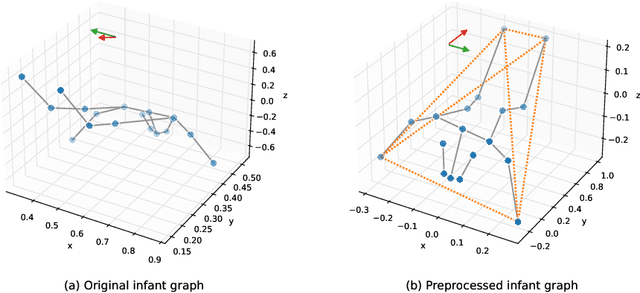


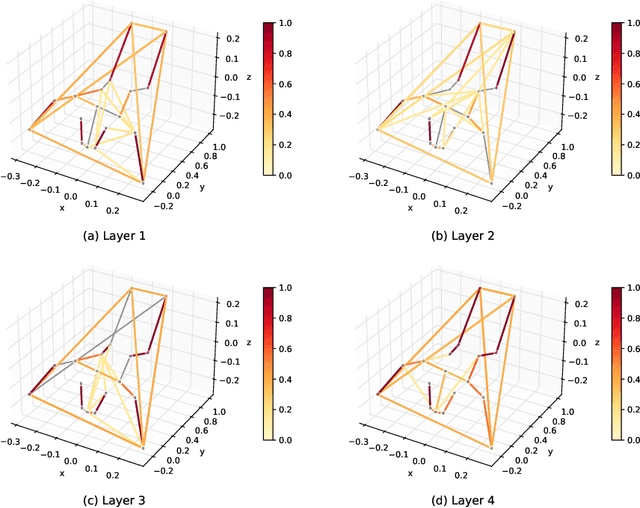
Abstract:Reliable methods for the neurodevelopmental assessment of infants are essential for early detection of medical issues that may need prompt interventions. Spontaneous motor activity, or `kinetics', is shown to provide a powerful surrogate measure of upcoming neurodevelopment. However, its assessment is by and large qualitative and subjective, focusing on visually identified, age-specific gestures. Here, we follow an alternative approach, predicting infants' neurodevelopmental maturation based on data-driven evaluation of individual motor patterns. We utilize 3D video recordings of infants processed with pose-estimation to extract spatio-temporal series of anatomical landmarks, and apply adaptive graph convolutional networks to predict the actual age. We show that our data-driven approach achieves improvement over traditional machine learning baselines based on manually engineered features.
Automatic Posture and Movement Tracking of Infants with Wearable Movement Sensors
Sep 21, 2019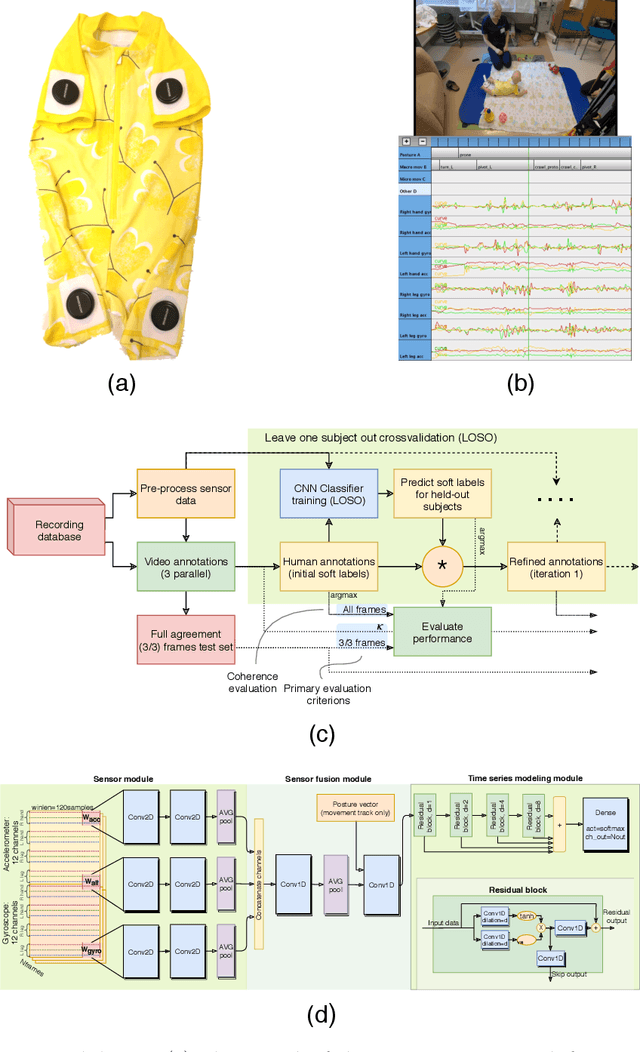
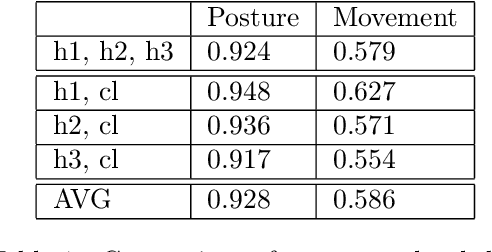
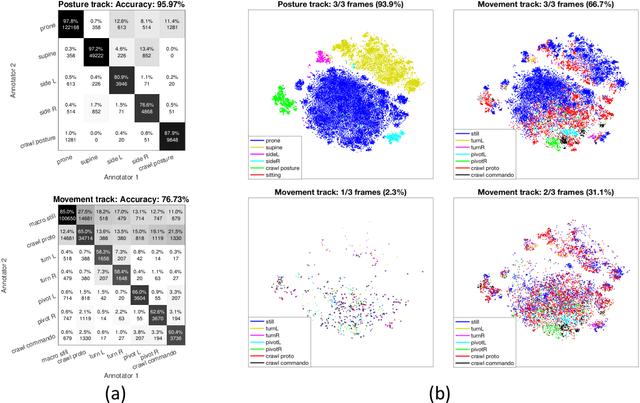

Abstract:Infant's spontaneous movements mirror integrity of brain networks, and thus also predict the future development of higher cognitive functions. Early recognition of infants with compromised motor development holds promise for guiding early therapies to improve lifelong neurocognitive outcomes. It has been challenging, however, to assess motor performance in ways that are objective and quantitative. Novel wearable technology has shown promise for offering efficient, scalable and automated methods in movement assessment. Here, we describe the development of an infant wearable, a multi-sensor smart jumpsuit that allows mobile data collection during independent movements. A deep learning algorithm, based on convolutional neural networks (CNNs), was then trained using multiple human annotations that incorporate the substantial inherent ambiguity in movement classifications. We also quantify the substantial ambiguity of a human observer, allowing its transfer to improving the automated classifier. Comparison of different sensor configurations and classifier designs shows that four-limb recording and end-to-end CNN classifier architecture allows the best movement classification. Our results show that quantitative tracking of independent movement activities is possible with a human equivalent accuracy, i.e. it meets the human inter-rater agreement levels in infant posture and movement classification.
 Add to Chrome
Add to Chrome Add to Firefox
Add to Firefox Add to Edge
Add to Edge